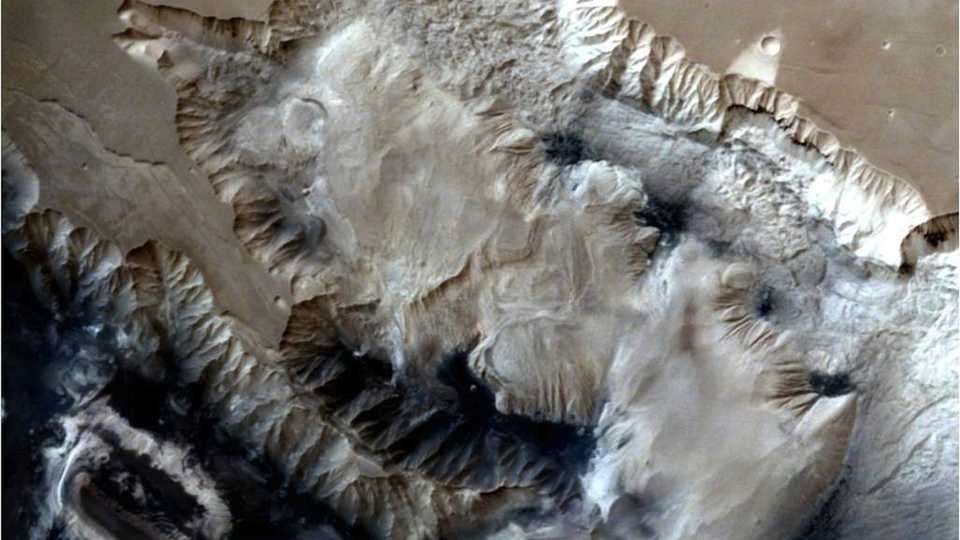Science News
Space Friday: Meteorites and DNA, MOM’s Mars, and Gas Giant Formation

Meteorites Impacts and DNA
Was life brought to Earth by meteors? Meteor and comet impacts may have played a crucial role in forming the building blocks for life, according to a paper published this week in Earth and Planetary Science Letters.
Yoshihiro Furukawa of Tohoku University and his team modified a 2009 experiment in which simulated meteorite impacts were found to form the simple amino acid glycine. This time, they switched the carbon source with bicarbonate acid (which was probably more common in Earth’s early oceans) and redid the hypervelocity impact experiments at one kilometer per second (that’s fast) with a single-stage propellant gun. They found that not only had nucleobases and proteinogenic amino acids (such as serine and aspartic acid) formed, but some of the amino acids had even joined into short peptides. In short, the building blocks for DNA.
“Comet impacts are normally associated with mass extinction on Earth, but this works shows that they probably helped kick-start the whole process of life in the first place. This finding indicates that comet impacts almost certainly played an important role in delivering the seeds of life to the early Earth,” said Haruna Sugahara of the Japan Agency for Marine-Earth Science and Technology. “It also opens the likelihood that we will have seen similar chemical evolution in other extraterrestrial bodies, starting with cometary-derived peptides.” –Elise Ricard
New Shots from MOM’s Trip to Mars
India’s Mars Orbiter Mission (also known as “Mangalyaan” in Sanskrit) has been circling the Red Planet for nearly a year—twice its original life expectancy. During each elliptical, 72-hour orbit, it photographs the surface, analyzes the atmosphere, and studies atmospheric interactions with solar wind and radiation—entirely with home-grown, Indian-made technologies.
The orbiter emerged in late June from a two-week communication blackout after Mars passed behind the Sun and sent back new images of the martian surface, one showing Gale Crater, the location of NASA’s Curiosity rover (officially, Mars Science Laboratory), which just celebrated its third year on Mars. Another shows Ophir Chasma, a wide, steep-walled canyon about halfway along the gigantic Valles Marineris rift, which at more than 2,500 miles (4,000 kilometers) long is the “grandest canyon” in the Solar System, far surpassing any similar feature on Earth.
Not bad for India’s first interplanetary mission—a “technology demonstrator” that cost only $73 million (less than a good number of Hollywood movies), making it the least-expensive Mars mission ever. Following the huge success of its first Mars mission, the Indian Space Research Organisation is considering a follow-up mission to Mars, a mission to Venus, a return to the Moon, or even a mission to an asteroid.
Mars is currently visible in the predawn sky, rising just before the Sun against the stars of Leo the Lion and nestled between brighter Jupiter and Venus. –Bing Quock
Forming Gas Giants
How do gas giants form? A paper published this week in Nature answers the question about planets like Jupiter and Saturn with an unusual suggestion: pebbles (the small rocks, not Fred Flinstone’s daughter).
Prior to this, the most widely accepted theory was that the cores of these giant planets were formed from celestial bodies 100–1,000 kilometers in size, colliding with one another and slowly building up mass (what astronomers call accretion). The challenge with this theory is that gas giants appear to form very quickly—within the first 10 million years of the lifetime of a solar system—and in order to accumulate a massive atmosphere, a gas giant must start with a very large core, about ten times the size of Earth. This core accretion model isn’t able to produce planetary cores large enough in that timeframe. Instead, it produces hundreds of Earth-mass planets.
“The timescale problem has been sticking in our throats for some time,” says Hal Levison, of the Southwest Research Institute (SwRI) and lead author of the new paper. “It wasn't clear how objects like Jupiter and Saturn could exist at all.”
So Levison and his colleagues created new computer simulations to model the evolution of gas giants. Calculations by the team show that the cores of Jupiter and Saturn could form well within the 10-million-year time frame if they grew by gradually accumulating a population of planetary pebbles—icy objects ranging from a centimeter to a few meters in diameter. Other recent research suggests that gas can play a vital role in increasing the efficiency of accretion. So pebbles entering orbit can spiral onto the protoplanet and assimilate, assisted by a gaseous headwind, the team reports.
Remarkably, this new model results in one to four gas giants, in agreement with the observed structure of our solar system.
“If the pebbles form too quickly, pebble accretion would lead to the formation of hundreds of icy Earths,” explains SwRI’s Katherine Kretke, a co-author on the study. “The growing cores need some time to fling their competitors away from the pebbles, effectively starving them. This is why only a couple of gas giants formed.”
“As far as I know, this is the first model to reproduce the structure of the outer solar system, with two gas giants, two ice giants (Uranus and Neptune), and a pristine Kuiper belt,” says Levison. –Molly Michelson
Ophir Chasma Image: ISRO